Master Surfing in Costa Rica: A Complete Guide
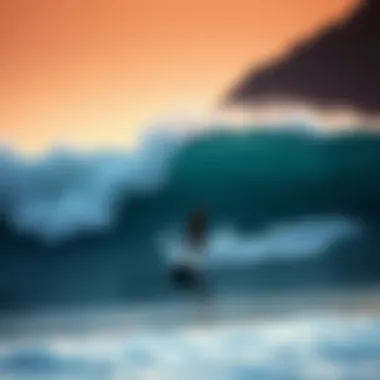
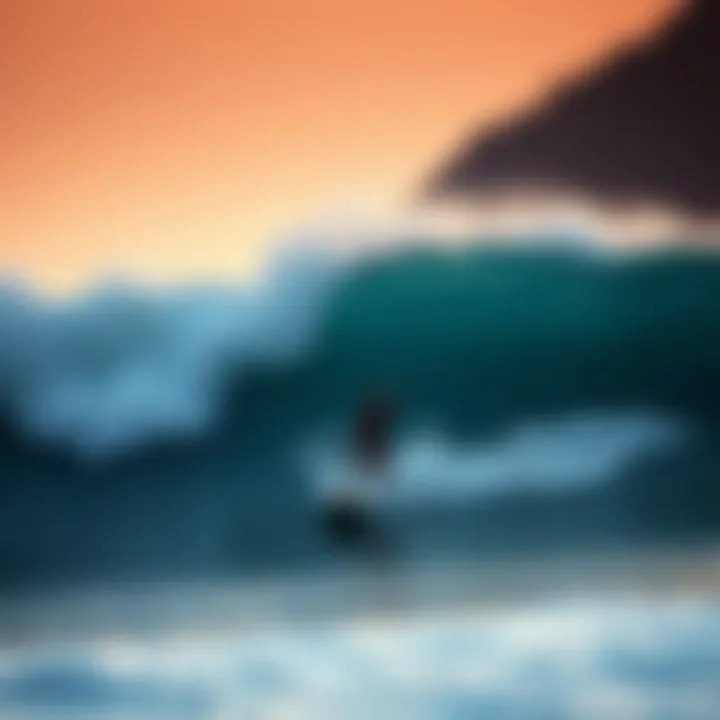
Intro
Costa Rica, a gem nestled in Central America, offers a unique blend of picturesque landscapes and thrilling waves. For anyone looking to ride the waves, this country stands out as one of the prime destinations for surfing enthusiasts of all levels. From beginners eager to catch their first wave to experienced surfers seeking to refine their techniques, Costa Rica has something for everyone. With over 800 miles of coastline, diverse surf spots, and a vibrant surfing culture, the opportunities are endless.
This guide aims to equip you with all the essential information you need to embark on your surfing journey in Costa Rica. We will explore the different beaches ideal for surfing, delve into the surf schools you might consider joining, and discuss the cultural aspects of surfing in this stunning locale. Additionally, we will cover essential gear, techniques, and skills needed to make the most of your surf experience.
As you read through each section, keep in mind that the act of surfing in Costa Rica isn’t just about the sport; it is about immersing yourself in the local coastal lifestyle. Much like the rhythm of the ocean waves, surfing flows seamlessly with the advent of a community that celebrates nature and the thrill of riding the surf. Are you ready to dive into the world of surfing in Costa Rica? Let’s get started.
Prelude to Surfing in Costa Rica
The allure of surfing in Costa Rica isn't just about riding waves; it's about immersing oneself in a rich culture that celebrates nature, adventure, and camaraderie. This introduction serves as a springboard into the world of surf in this Central American paradise, where the coastlines are dotted with surfers of all skill levels, from those just dipping their toes in to seasoned wave riders who have traveled far and wide.
When approached with respect and understanding, the experience of learning to surf here can transform an ordinary vacation into a lifetime passion. Moreover, understanding the environment and culture surrounding surfing is crucial for any aspiring surfer. This knowledge enhances not only your surf skills but also enriches the overall experience. Costa Rica’s surf culture thrives on community, emphasizing sharing and supporting one another on and off the waves.
Overview of Costa Rica's Surf Culture
Costa Rica's surf culture is as vibrant and diverse as its landscapes. The country is a melting pot of locals and tourists who bond over a mutual love for the ocean. With surf spots sprinkled across both the Pacific and Caribbean coasts, the surfing community here has grown steadily over the decades. From the laid-back vibe of beach towns to the lively chatter of surf schools, it’s easy to feel the infectious spirit that draws people to the ocean.
Surfing isn’t merely a sport in Costa Rica; it’s a way of life. The country fosters a sense of stewardship towards the environment, with many local surfers advocating for ocean and beach preservation. Surf contests and festivals also play an important role in the culture. They don’t just showcase talent; they embody the sense of unity, with participants cheering for one another regardless of skill.
The influence of surfing can be felt beyond the beaches as well. Music, art, and even cuisine reflect the carefree, adventurous nature that surfing promotes. It’s not uncommon to hear local musicians strumming songs inspired by the ocean or find eateries with surf-themed decor. For beginners, embedding oneself in this culture can ease the learning curve while providing a supportive network.
Why Costa Rica is Ideal for Surfing
Costa Rica stands out as a surfing gem, thanks to a few key elements that make it an ideal destination for surfers of every level.
- Consistent Swells: The Pacific coast offers reliable waves year-round, making it accessible for both newcomers and experienced surfers. Depending on the season, surfers can chase swells of different sizes and types.
- Diverse Beaches: From gentle beach breaks to powerful point breaks, there’s a surf spot for everyone. Beginners may find solace in the mellow waves of Tamarindo, while advanced surfers can test their skills in the challenging waters of Punta de Lobos.
- Supportive Communities: The surf schools and local surf shops are riddled with instructors passionate about sharing their knowledge. The congenial atmosphere invites questions, and everyone is ready to lend a friendly hand.
- Natural Beauty: Surfing is about the rhythm of the ocean, but it’s also about the stunning environments one encounters. Costa Rica's lush greenery and wildlife create a breathtaking backdrop for surfing that captivates the soul.
Water is the source of life, and in Costa Rica, the ocean is like an old friend—the kind that teaches you patience, humility, and joy all at once.
- Sustainable Practices: Increasingly, the surfing community in Costa Rica is focusing on sustainability. Many surf schools and organizations are committed to eco-friendly practices, promoting not just surfing skills, but also a respect for the ocean and marine life.
With all these factors combined, Costa Rica is not merely a place to learn how to surf; it's a sanctuary for growth, learning, and connection to oneself and nature. Whether you’re just starting or seeking to refine your skills, the waves of Costa Rica are calling.
Popular Surfing Destinations in Costa Rica
When it comes to learning to surf, the choice of location can make all the difference, and Costa Rica is truly a goldmine for surf prospects. Not only are its beaches kissed by consistent waves year-round, but each coastal town harbors its own unique surf culture and vibe. There's more to selecting the right surf spot than just a picturesque view; factors like wave conditions, the crowd, and available amenities all play an important role. Understanding the popular surfing destinations ensures that beginners and intermediates alike can maximize their learning experiences and truly enjoy the art of riding waves.
Tamarindo: A Hub for Surf Beginners
Tamarindo stands out as a premier destination for those just dipping their toes into surfing. The waves here are friendly, making it a prime spot for novices eager to conquer the surfboard. The beach has a gentle break that is perfect for beginners, moving from soft swells to manageable waves. In addition, Tamarindo’s thriving surf community means you won’t be alone on your journey. Surf schools like Surf Simply provide tailored lessons, ensuring that you can hone your skills at your pace.
The charm of Tamarindo extends beyond surfing. The vibrant beach town is filled with lively restaurants, beach bars, and shops that cater to surfers. After a day of surf lessons, you can easily find a place to unwind with a cold drink or explore local delicacies.
Nosara: The Underrated Gem
Just a short drive from Tamarindo, Nosara has been gaining traction as a surfing hotspot, especially for those looking for a less commercialized experience. This coastal town is somewhat off the beaten path, which lends it a tranquil atmosphere, attracting surfers who appreciate a laid-back vibe. The waves at Playa Guiones appeal to all levels, but the consistent conditions particularly favor those who have a bit of experience under their belts.
Nosara’s eco-friendly community fosters a deep respect for nature, making it a lovely spot to learn not only about surfing but also about the importance of marine conservation. As you paddle out, you might even encounter dolphins or sea turtles, reminding you that you're part of something bigger.
Santa Teresa: A Surfing Paradise
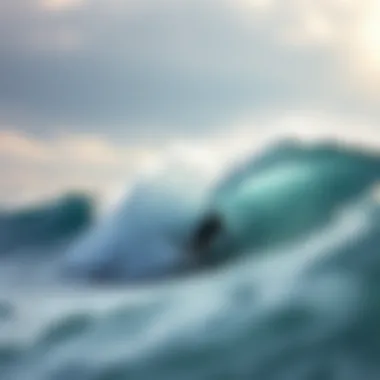
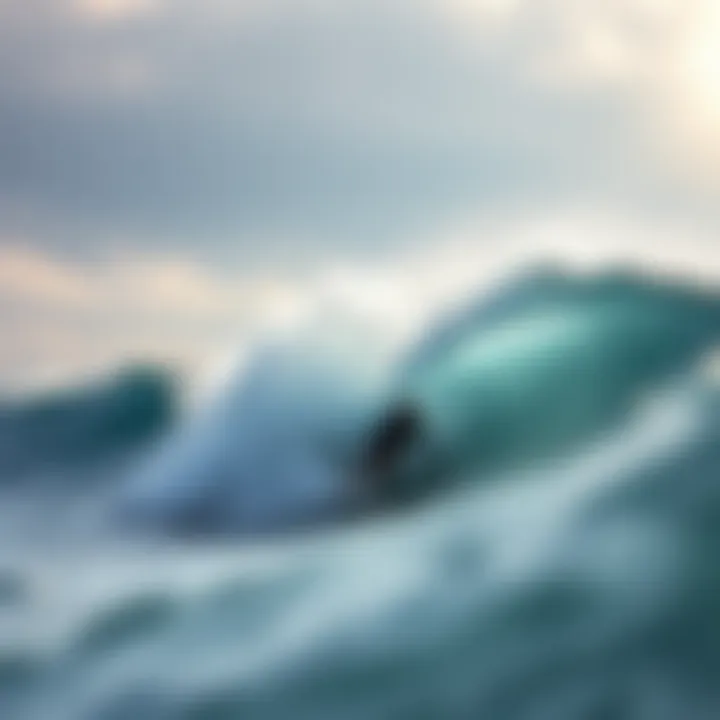
Santa Teresa is often heralded as one of Costa Rica’s most idyllic surf locations. Those who make the pilgrimage here are rewarded with breathtaking sunsets and stunning waves. The beaches are lined with palm trees, and the sound of the crashing surf is a constant companion. Here, the waves vary from beginner-friendly to those that can challenge even the seasoned surfer. This range makes Santa Teresa a versatile destination for all skill levels.
Additionally, the local surf schools—like Blue Moon Surf Camp—provide an immersive experience with personalized instruction. As they teach you the ropes, they also introduce you to the rich local culture, giving you a taste of the pura vida lifestyle. This town boasts a sense of community, where surf enthusiasts of all ages gather and share tales of their adventures.
Jaco: The Surf Town with Nightlife
If you fancy some nightlife after catching waves, Jaco is the place to be. Not only is it known for its reliable surf breaks, but it is also a hub for an energetic social scene that pulses well into the night. The waves here cater to both beginners and intermediates, offering a few different breaks suited for learning and improving skills. Surf schools such as Selina Surf Club capitalize on Jaco's vibrant energy, giving lessons that are as fun as they are informative.
Jaco’s beachfront promenade is filled with bars, clubs, and shops making it an easy choice for those looking to unwind after a day in the sun. While learning to surf in Jaco, you can also indulge in various leisure activities, from zip-lining to horseback riding along the beach.
The choice of a surf destination can shape your entire learning journey, and Costa Rica offers a mix of options that cater to every surf enthusiast.
Finding Surf Schools in Costa Rica
Finding the right surf school can make a world of difference for those looking to catch their first wave in Costa Rica. The country's scenic coastlines are as diverse as the surf schools available, making it essential to weigh various options. Choosing a surf school isn't just about picking a random name from a list; it's about aligning personal goals with the best learning environment.
When surfing in a foreign land, especially in a hotspot like Costa Rica, making an informed choice is pivotal. Whether you’re keen on leaning the basics or polishing your intermediate skills, the selections you make can influence your overall experience. It's not merely about the skill level being taught, but also about the vibe of the school, types of lessons offered, and the instructors.
This section will delve into important criteria for selecting a surf school, list some top-rated options, and compare various lesson formats that cater to different learning styles. By the end of this, readers should have a clearer picture of how to navigate surf school options to boost their surfing skills effectively.
Criteria for Choosing a Surf School
When on the hunt for a surf school in Costa Rica, there are several critical factors worth pondering. First and foremost, consider the qualifications of instructors. Having experienced surf coaches can make the learning process smoother and safer. Often, schools that emphasize well-trained staff are more likely to provide a fulfilling experience.
Also, think about group sizes. Larger classes might seem like they're more fun, but a smaller student-to-instructor ratio can lead to more personalized attention. Additionally, reviews and reputations matter. Look for schools with positive feedback to assess the overall quality and safety. Furthermore, location is also crucial; proximity to good surf spots can save time and maximize your time in the water.
Top-rated Surf Schools
Surf Simply
Surf Simply stands out with its intensive surf coaching approach. Unlike most surf schools, it adopts a unique "coaching" methodology, focusing on video feedback and personalized coaching sessions. This feature sets it apart, attracting those who truly seek to develop their skills. The intimate class environment ensures that each learner gets hands-on guidance from seasoned instructors. While it does come with a higher price tag compared to other schools, the tailored experience is often deemed worth the investment.
Selina Surf Club
Selina Surf Club marries surf instruction with a vibrant social scene. It's not just a place to learn how to surf; you’ll also find co-working spaces, a bustling atmosphere, and accommodations that cater to many tastes. This makes the club appealing for digital nomads and travelers. Selina offers a variety of lesson formats, including group classes that are budget-friendly. However, the lively atmosphere might not suit those looking for a more serious or quiet surf education.
Blue Moon Surf Camp
Blue Moon Surf Camp is celebrated for its holistic approach to surfing. The instructors focus on not only teaching the mechanics but also instilling an appreciation for ocean ecology and wave dynamics. Their tailored camps also cater to various skill levels, making it easy for everyone to feel welcome. However, one should note that its focus on lifestyle integration might be slightly off-putting for those strictly wanting technical improvements without the extra fluff.
Comparison of Lesson Formats
Choosing how to learn is as crucial as where to learn. Surf schools in Costa Rica offer various lesson formats that can cater to differing preferences and experiences.
Group Lessons
Group lessons are often popular due to cost-effectiveness and socialize aspect. Many find that learning alongside peers fosters camaraderie and the chance to make new friends. However, with larger groups, personal attention from instructors may be limited, leaving some beginners feeling a tad lost among the crowd.
Private Sessions
Private sessions offer tailored guidance suited to individual skill levels and needs. These sessions are often adapted on-the-fly to address the surfer's unique challenges. While this targeted approach truly hones skills, it can come with a heftier price, which might not be feasible for everyone.
Workshops
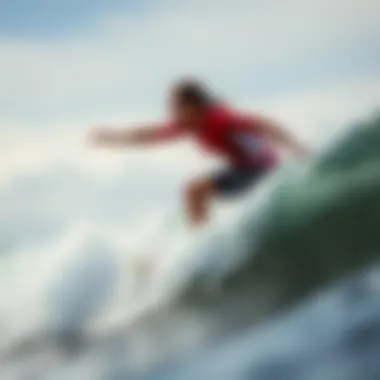
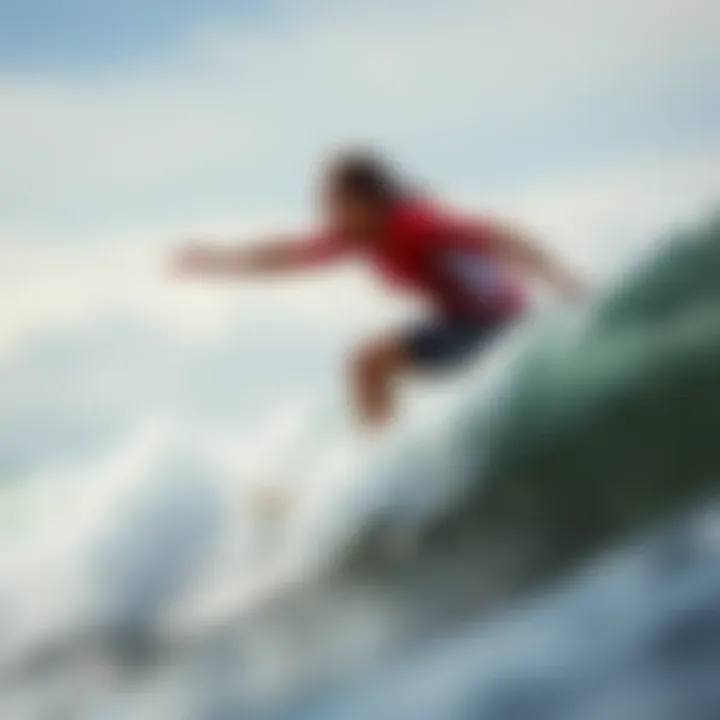
Workshops are another way to beef up skills, typically offering specialized focus areas like wave etiquette or advanced maneuvers. They can be excellent for those wanting to hone specific aspects of their surfing without committing to a week-long course. That said, they might require a pre-existing level of comfort on the board to get the most from them.
The right surf school will not only teach you how to ride the waves but will also shape your overall perspective on surfing and ocean awareness.
Essential Skills for Surfing
Surfing, particularly in a picturesque place like Costa Rica, demands more than just enthusiasm; it requires honing essential skills. These skills not only build your confidence in the water but also ensure your safety and the enjoyment of the sport. Acquiring these abilities is foundational regardless of whether you're a rookie or looking to perfect your existing technique. Everyone, from absolute beginners to those with a little experience, can benefit from mastering the basics and moving on to intermediate skills.
Basic Techniques for Beginners
Paddling
Paddling is perhaps the most critical action a surfer must master. It is the gateway to catching waves and getting in position. The key aspect of paddling is understanding the rhythm and the right posture on the board. Your chest needs to be over the board and your arms should reach evenly into the water. Not only does effective paddling position you to catch waves, but it also helps you navigate back into the lineup with ease.
Paddling is beneficial because it develops your shoulder strength and endurance, both essential for longer surf sessions. Moreover, good paddling can make a difference when competing for waves. However, be cautious, as over-exerting yourself without proper technique can lead to exhaustion, impacting your overall performance on the board.
Positioning on the Board
Positioning on the board is all about finding that sweet spot where balance and buoyancy come together. When beginners place themselves too far back or too far forward, it can drastically affect their ability to maintain stability and glide. The primary characteristic here is finding the balance point that engages the nose slightly above the water, which allows for smoother paddling and wave catching.
This skill is fundamental in increasing your wave count. When you learn to position yourself better, you'll find yourself getting up on waves more often, enhancing your surfing experience significantly. But beware, as misjudging your position often leads to a wipeout, making this a tricky area to master.
Standing Up
Standing up on the board is where the magic happens. It's the moment of transition from lying down to catching that glorious wave. The key characteristic here is timing; you must pop up at the right moment when you've caught the wave's energy. This action, often referred to as 'the pop-up,' is a fundamental skill that defines your surfing ability.
This technique is essential because it enables you to ride the wave, which is ultimately the goal of surfing. Unique to standing up is the balance you require to maintain, as shifting your weight improperly can lead to falling off, which is common among beginners. With practice, standing becomes less daunting, and soon every ride feels like an accomplishment.
Intermediate Skills to Master
Turning
Turning is an essential intermediate skill that allows you to maneuver your board and navigate through different wave conditions. The primary aspect of turning involves shifting your weight and using your body to guide the board. Whether it's a cutback or a bottom turn, mastering this skill can dramatically enhance your surfing ability.
Turning is significant because it allows you to generate speed and set yourself up for rides on larger waves. A key feature of turning is fluid movement; abrupt actions will likely throw you off balance. While turning can take time to master, doing so opens up the opportunity to explore various styles of surfing and tackle diverse wave styles.
Reading Waves
Reading waves is like gaining a superpower in surfing. This skill involves understanding wave patterns, conditions, and how they break, which ultimately determines your success in choosing which waves to catch. The key characteristic is developing an intuition for the ocean's rhythms, knowing when a wave will peak and when it's best to paddle.
This skill empowers surfers to position themselves in optimal spots, maximizing wave rides while avoiding overcrowded areas. While some surfers may struggle with this skill initially, once acquired, it greatly elevates your surfing. One disadvantage, though, is that it can take a lot of time and experience to develop this intuition thoroughly.
Safety Techniques
Safety techniques are non-negotiable for anyone who intends to surf, irrespective of their skill level. This includes knowing how to wipe out safely, understanding ocean currents, and being aware of local wildlife. The key characteristic here is gaining knowledge and awareness; knowing how to respond in various situations can make a considerable difference.
Mastering safety techniques ensures not just your well-being but also the enjoyment of fellow surfers. An awareness of safety features, like using the leash correctly and avoiding collisions, makes for a conducive surfing environment. It's crucial to get familiarized with your surroundings, as ignoring these techniques can lead to accidents, making them essential to any surf session.
Mastering the essential skills of surfing is not just about conquering waves; it's about building a strong foundation for a lifetime of adventure in the ocean.
This guide serves to remind that the journey of learning to surf is as rewarding as the waves themselves. With focused practice and understanding of these techniques, anyone can become a competent surfer.
The Environmental Aspect of Surfing
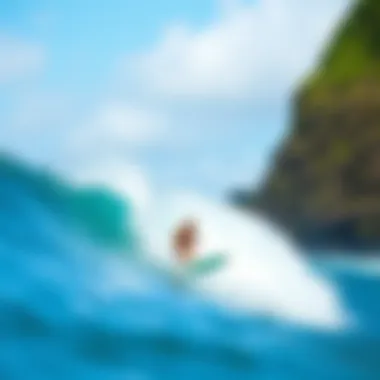
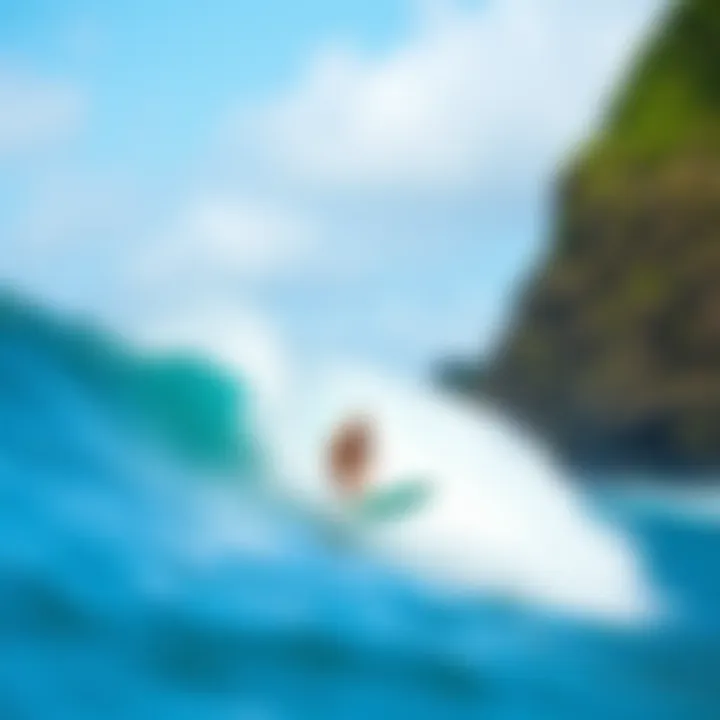
Surfing is more than just catching waves; it's about connecting with nature and understanding the delicate ecosystems that exist along the coast. In Costa Rica, this connection is especially profound, given the country’s commitment to environmental preservation. Learning about the environmental aspects of surfing not only enriches a surfer’s experience but also fosters a sense of responsibility for maintaining the health of coastal areas.
Understanding Wave Dynamics
Wave dynamics are crucial for surfers to grasp, as they influence the quality and power of the waves that one might ride. Waves are formed through the interaction of wind, water, and the ocean floor. In Costa Rica, the geographical features play a heavy role in wave consistency.
- Wind Patterns: The offshore and onshore winds shape how waves break, affecting their height and shape. Surfers should pay attention to local wind reports, as they can dictate the best times for surfing.
- Ocean Currents: These can enhance or detract from the surfing experience. Understanding local current behavior can keep surfers safe and help them to surf more effectively.
- Seasonal Changes: Swell patterns change throughout the year, influenced by shifting climatic conditions and tides. Recognizing these patterns aids surfers in choosing the ideal times to hit the waves.
"The ocean is a powerful teacher. Understanding its rhythms enhances our surfing skills and fosters respect for its strength.”
Marine Life and Reef Preservation
Costa Rica’s warm waters are teeming with vibrant marine life, from colorful fish to graceful sea turtles. However, this beautiful ecosystem is fragile and needs protection.
Surfers play an important role in conservation efforts:
- Respecting Marine Environments: Surfers should be cautious around coral reefs. When navigating these areas, it’s vital to avoid standing on them or damaging them in any way. Being mindful not to kick up sand or debris can help preserve these critical habitats.
- Participating in Clean-Up Initiatives: Many surf schools and local communities organize beach clean-ups. Getting involved not only contributes to healthier beaches but also fosters a sense of community among surfers.
- Supporting Local Conservation Efforts: Some organizations focus on marine conservation and educating the public about the importance of preserving natural habitats. Supporting these initiatives can help ensure that future generations can enjoy the same waves and marine life.
By understanding marine life and engaging in reef preservation, surfers can be advocates for the ocean, turning their passion into a platform for positive change. In Costa Rica, where surfing culture thrives amidst lush biodiversity, the responsibility to protect and honor these environments is a part of the surfer’s journey.
Best Time to Surf in Costa Rica
Understanding the best time to surf in Costa Rica is crucial for anyone wanting to make the most out of their surfing experience. Costa Rica, with its diverse coastline and varying swell conditions, offers surfers an ever-changing landscape to explore. Surfing during the right season can mean the difference between catching a wave of a lifetime or struggling against choppy waters.
Seasonal Waves: Understanding Swells
Waves in Costa Rica vary significantly across different times of the year, influenced primarily by the swells generated from distant storms and weather patterns. The two main seasons here can generally be categorized as the dry and wet seasons.
- Dry Season (November to April): This period is often hailed as the most ideal time for surfing. The offshore winds are consistent, creating clean and favorable wave conditions. The Pacific Coast, in particular, sees powerful swells, perfect for both beginners and seasoned pros alike.
- Wet Season (May to October): While the waves can be more unpredictable during this season, they can also produce bigger swells, which may appeal to more advanced surfers. Certain beaches may even receive more challenging waves due to the strong winds and changing weather.
In general, if you’re aiming for reliable, manageable waves, the months from December to March are prime time. A novice surfer would likely benefit from these calmer waves while still getting the thrill of donning a wetsuit and paddling out.
"Catching the right wave at the right time is all about patience—wait for it and you’ll be rewarded."
Crowd Considerations Throughout the Year
While timing your visit to coincide with the best waves is essential, understanding the crowd dynamics can enhance your surfing experience as well. Costa Rica’s surfing destinations can get packed, especially during peak tourist seasons.
- Peak Tourist Season (December to March): Expect beaches like Tamarindo and Jaco to be bustling with both local and tourist surfers. If you're looking to find a quiet spot, be prepared to wake up at the crack of dawn or explore less crowded locales like Nosara.
- Shoulder Seasons (April to May, September to November): These months can be a mixed bag. You might find fewer crowds, but also less consistent waves. It can be an excellent opportunity for personal growth in your skills, away from the throngs.
- Low Season (May to September): Less foot traffic means you can enjoy more space on the waves, but do keep in mind that the wave quality may not always be up to par. Knowing when to go can ensure that you have a rewarding surf experience.
Ultimately, balancing wave conditions and crowd levels allows for a personal surfing experience. Fine-tuning your timing will not only help you catch more waves but also give you a chance to immerse yourself in the local surf culture, making your time spent in Costa Rica truly unforgettable.
The End
As we wrap up our comprehensive exploration of learning to surf in Costa Rica, it becomes clear that this adventure is far more than just catching waves; it’s about embracing a lifestyle defined by the rhythm of the ocean and the vibrant culture surrounding it. Surfing is a unique bridge among enthusiasts, creating connections that often transcend language and borders.
Recap of Key Points
In this article, we've journeyed through the essence of Costa Rica's surfing landscape:
- Costa Rica’s Surf Culture: The nation attracts surfers from around the globe, offering a mix of stunning beaches, warm waters, and a welcoming atmosphere. The passion for surfing is palpable wherever you go.
- Top Locations: From Tamarindo's beginner-friendly waves to Santa Teresa's picturesque settings, each surf destination highlights different experiences suited for both novices and seasoned surfers.
- Surf Schools: Understanding the variety of surf schools in Costa Rica helps potential surfers make informed choices about where to learn. Schools such as Surf Simply and Selina Surf Club cater to various learning styles, ensuring all can find an ideal fit.
- Essential Skills: We’ve delved into the fundamental skills necessary to ride waves and how to gradually advance from basic techniques to mastering turns and reading waves.
- Environmental Awareness: Surfers are often natural advocates for marine conservation, understanding the delicate balance of marine life and the necessity for preserving the reefs.
- Optimal Surfing Seasons: Different times of the year bring varying crowd levels and wave conditions, crucial for both safety and enjoyment on the water.
Encouragement for New Surfers
If you’re on the fence about stepping into the world of surfing, consider this your nudge to take the plunge. Everyone starts somewhere, and Costa Rica provides a nurturing environment for beginners. Whether it’s the excitement of standing on your board for the first time or the satisfaction of showcasing your newfound skills, those moments are invaluable.
Remember that every surfer was once a beginner, navigating the struggles of balance and wave selection. Don’t be discouraged by challenges; revel in them. As you immerse yourself in this exhilarating sport, you’ll find not just a hobby, but a community. Explore local surf reports, engage with other surfers, and soak in the rich culture that surrounds this thrilling pastime.
Embrace the waves, respect the ocean, and enjoy the ride. Your surf journey in Costa Rica awaits!







